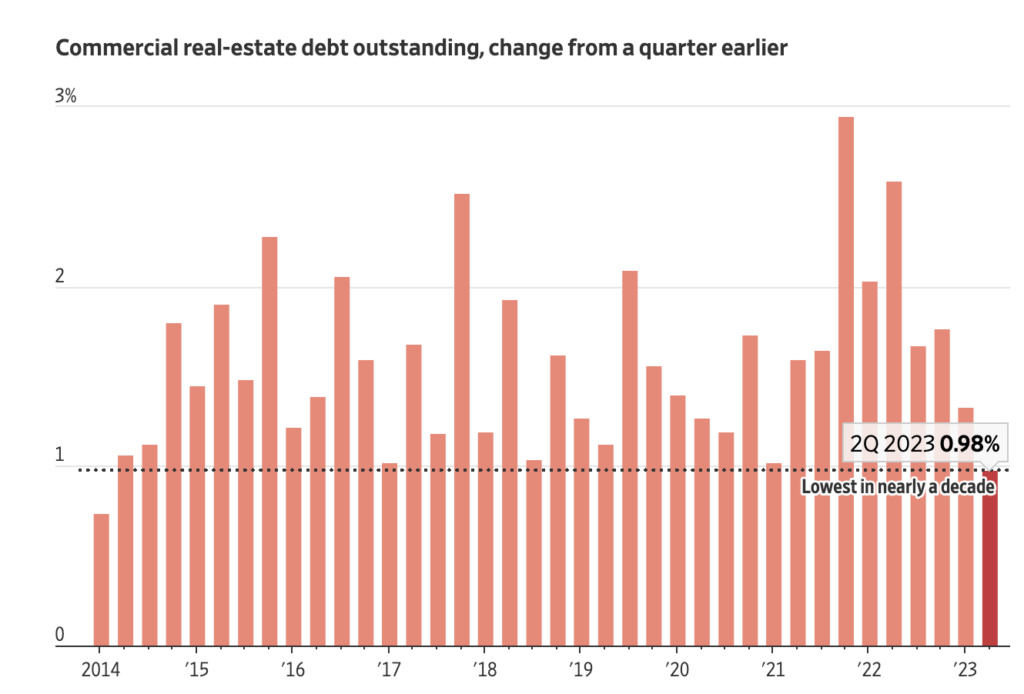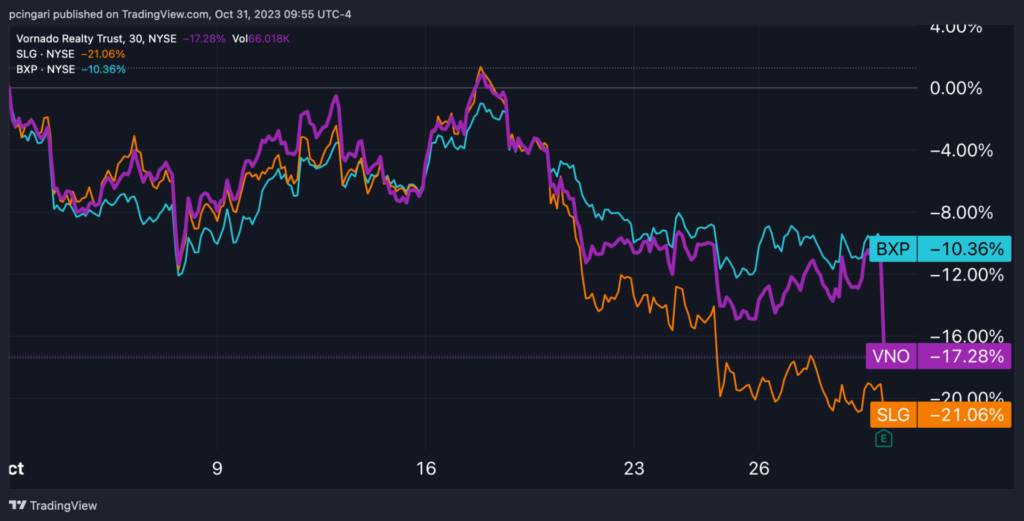Zinger Key Points
- Commercial property market lenders are reducing their exposure due to interest rate hikes and recession fears.
- Decrease in lending indicates a potential slowdown in new construction projects and increases the chances of loan defaults.
- Get the Real Story Behind Every Major Earnings Report
A significant contraction in lending is leading to a rise in defaults across the commercial real estate (CRE) sector.
The lending slump also heralds a substantial slowdown in new construction projects across various property types.
What Happened: Lenders in the commercial property market, including banks and insurance companies, are reportedly cutting back their exposure due to the Federal Reserve’s interest rate hikes.
Most commercial real estate loans are linked to short-term rates and not long-term rates. Lenders are wary of possible overvaluations of different property types.
Commercial property construction starts are predicted to fall by 17% in 2023. That’s the most significant annual decline since 2009, according to data analytics firm Dodge Construction Network.
According to data from MSCI Real Assets, the third quarter saw a significant decline in U.S. commercial property purchases, with only $89.2 billion transacted. This marked a 53% drop compared to the corresponding period in the previous year.

Source: The Wall Street Journal
Private debt funds are struggling to raise capital and are focused on dealing with existing borrowers.
A study by Trepp, a data provider, indicates that the total volume of CRE loans currently held by banks, the primary source of debt financing, fell in the first two weeks of October. This represents a rare event, as bank property lending has only declined twice since 2014.
Alternative lenders have been reducing their lending activity, resulting in only $28.2 billion of loans being converted into commercial mortgage-backed securities this year, the lowest figure since 2011, according to Trepp. Additionally, the largest mortgage REITs ceased lending to new borrowers in the first half of the year.
Matthew Anderson, managing director of Trepp, noted that the whole commercial property debt market saw less than a 1% increase in Q2, marking the smallest quarterly rise since Q1 2014.
This lending squeeze has particularly affected office owners refinancing maturing loans at higher rates. The scarcity of financing is also hitting other commercial borrowers in the apartment building and warehouse sectors, which have been investor favorites for several years.
The VanEck Office and Commercial REIT ETF DESK saw its value tumbling 9% in October. Vornado Realty Trust VNO, SL Green Realty Corp. SLG and Boston Properties, Inc. BXP, have tumbled 17%, 21% and 11% respectively over the past month.
Chart: Commercial Real Estate Stocks Tumbled In October

Read Next: US Banks Witness Whopping $100 Billion Deposit Drop In Just Three Weeks, Fed Survey Raises Alarm
© 2025 Benzinga.com. Benzinga does not provide investment advice. All rights reserved.
Trade confidently with insights and alerts from analyst ratings, free reports and breaking news that affects the stocks you care about.